Demons of Asteborg Review
Fast Facts
Demons of Asteborg
Developer: Neofid Studios
Publisher: Neofid Technology
Website: https://www.demonsofasteborg.com/
Genre(s): Platformer, Adventure, Arcade, Action
Platform: Nintendo Switch (also avaialble on Sega Megadrive and Steam)
Age Rating: PEGI 12
Release Date: 01/08/2021
Price: £17.99
A code was provided for review purposes
Introduction
It always surprises me to see new releases launching on outdated consoles. Demons of Asteborg launched on PC, Nintendo Switch, and the Sega Genesis. It takes inspiration from retro titles as well. It reminds me of Ghouls and Ghosts and Castlevania. Does accommodating an ancient console detract from the experience? Or does it bring out just the right memory? Find out in this Rapid Review.
Familiar Feeling
Once booting up the title, I was shown a brief cutscene establishing the premise of the title. It follows a simple plot. Decades ago, demons and humans lived peacefully among each other. However, that did not last. Now, the demons and the humans are fighting, and I was the only chance they had to survive. I enjoyed the story, but it was not the most important element in the game. It reminded me of other games I had played previously. Even though it was not the most original adventure, the story was cute and cohesive.
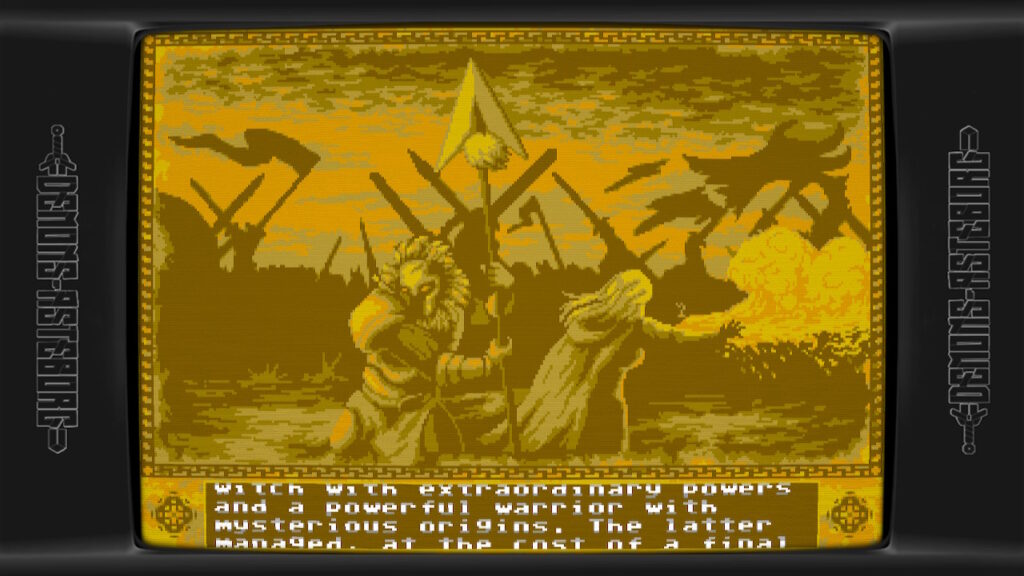
Though the story was not groundbreaking, each of the characters I was introduced to have significant roles in the story. They were both memorable and distinct. They brought out the personality in the game as well. The character designs in Demons of Asteborg were excellent additions.
Overall, the story content did not largely impact my experience with the game. However, the elements that were present positively impacted the game, making it a more enjoyable experience. At the same time, I would not recommend the game for someone who is looking for an immersive story.
Saving the World
The gameplay, while reminiscent of other action-adventure titles is distinctly unique. I played as Gareth; a powerful warrior destined to save Asteborg from the demons. I began my journey with a simple sword but as I progressed, I encountered new abilities to use and additional weapons. Each level showcases a unique magical ability. I really enjoyed this addition because progression not only introduced me to new environments and enemies but developed my character. One thing I enjoyed was how the developers built each stage around the new ability. In each new level, the abilities learned in the previous level were forgotten. Sure, sometimes I wanted to rely on an ability I used in a different section, but this same decision ensured I mastered every ability I encountered. It made each level about my characters abilities and differentiated each experience.
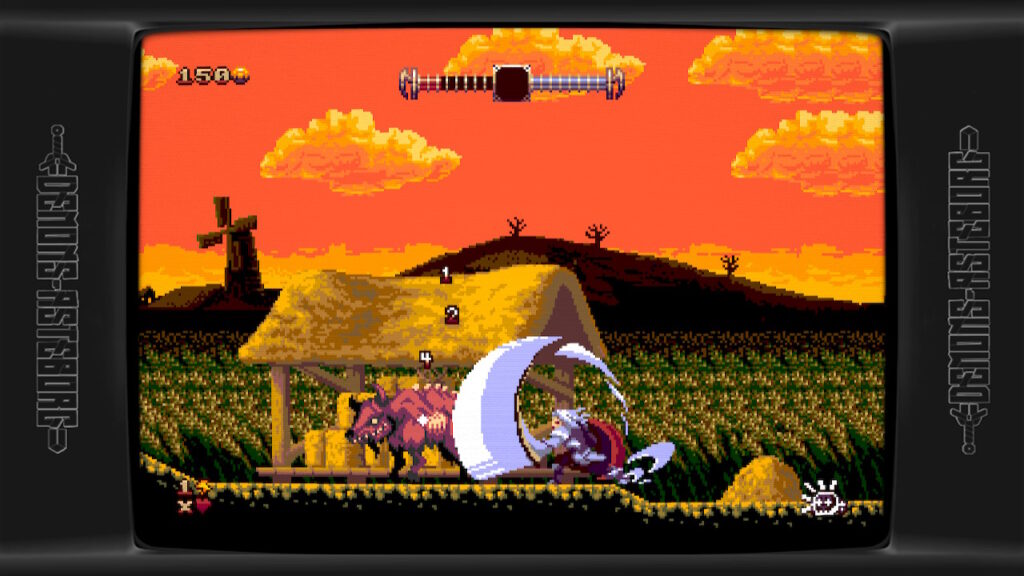
In addition to magical spells, throughout each level, I collected coins that could be spent at an in-game shop. I could purchase health upgrades, additional ways to attack my opponents, and even quality of life features. This shop was a great addition because hidden in each level were treasure chests and bonuses. These encouraged my exploration. The developers did a great job designing them as well. I would often see these objects of interest in the top corner of one screen but would need to access them from a neighbouring screen. These simple exploration elements made traversing each stage substantially more engaging. I really enjoyed their inclusion. The currency system as well as the unlockable upgrades made progressing through Demons of Asteborg a great experience.
Hordes and Hordes
In addition to my own move set, the enemies were each distinctly unique and had their own personalities. I fought bats, zombies, and even golems. The differences in each enemy were not simply cosmetic. I learned which could be swiftly slaughtered or which required careful manoeuvring. This was made even more clear with one of the unlockable abilities. It allowed me to see exactly how much health each enemy still had. With this feature, I was always amply prepared to enter battle. This was even more helpful in the boss fights. The boss fights were well-designed and required that I analyzed the patterns instead of blindly swinging. Additionally, some bosses would require innovative thinking. Unfortunately, while it made for interesting combat, sometimes, fighting enemies was overly confusing.
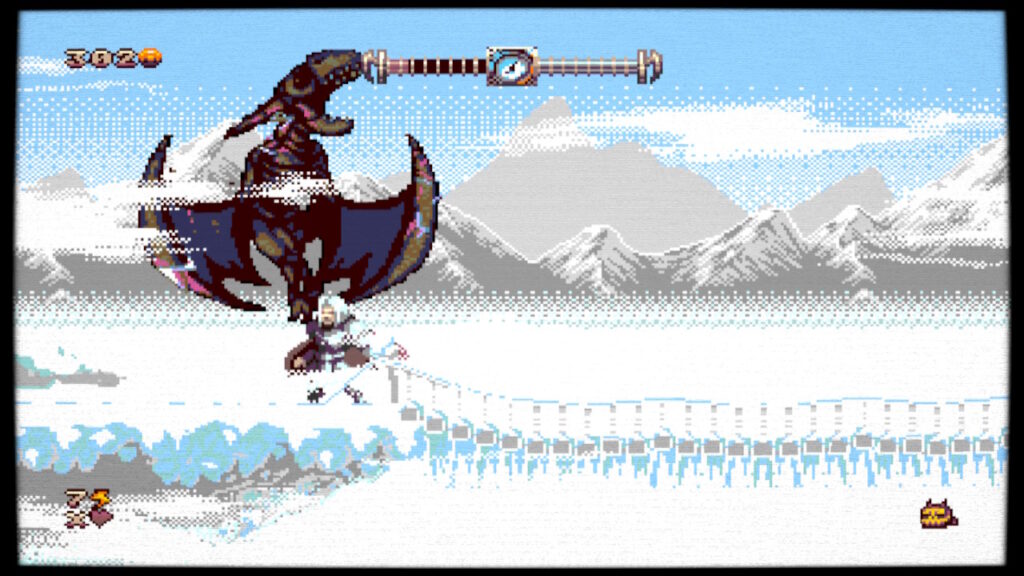
For example, one enemy was vulnerable throughout most of the fight. However, at one point, he becomes immune to typical damaging attacks. At the same time, this boss began implementing a new move, charging a massive electric ball, and hurling it at me. I was shocked when I realized I needed to keep hitting the ball back and forth with him, as though I was playing ping-pong, instead of simply evading the attack. Once I finally uncovered how to fight the boss, I had a good time with it, but confusing boss fights did occasionally frustrate me. That being said, the bosses were still a highlight. They were well telegraphed, had distinct weaknesses (though uncovering them was sometimes challenging), and each encouraged a different playstyle.
Adaptable Challenge
With so many tough challenges featured in one game, it may seem daunting to anyone who has never played similar titles before. Thankfully, I found that the game had a great difficulty balance. Before beginning the game, I was prompted to select my difficulty setting. The default setting, normal, gives Gareth three chances to continue his journey, even after death. There is an easier difficulty and a more challenging one as well. Even though these respawns seem penalizing, I encountered checkpoints along the way. I was never burdened by checkpoints being too dispersed. Not only will amateur players feel comfortable, but more experienced players will be aptly challenged in the more challenging modes. I thought the difficulty calibration was well thought out.
Unfortunately, despite many great positive features about the game, one of the major grievances I found with this title was the performance. It was not terrible, but there were some noticeable frame drops throughout my experience. The slowdown never got so severe that I suffered undeserved damage or missed a jump, but I was disappointed to see it, nonetheless. Moreover, one time, the game froze while I was fighting in a boss fight. I needed to restart the game, and thus I needed to restart the entire level before I got to where I left off. This was further amplified by how lengthy the levels are. It did not detract from the experience whatsoever, but compared to a game such as Within the Blade, levels are long and require more of a time commitment. Even though there were some minor issues with performance, they did not ruin my adventure.
Devilishly Good Music
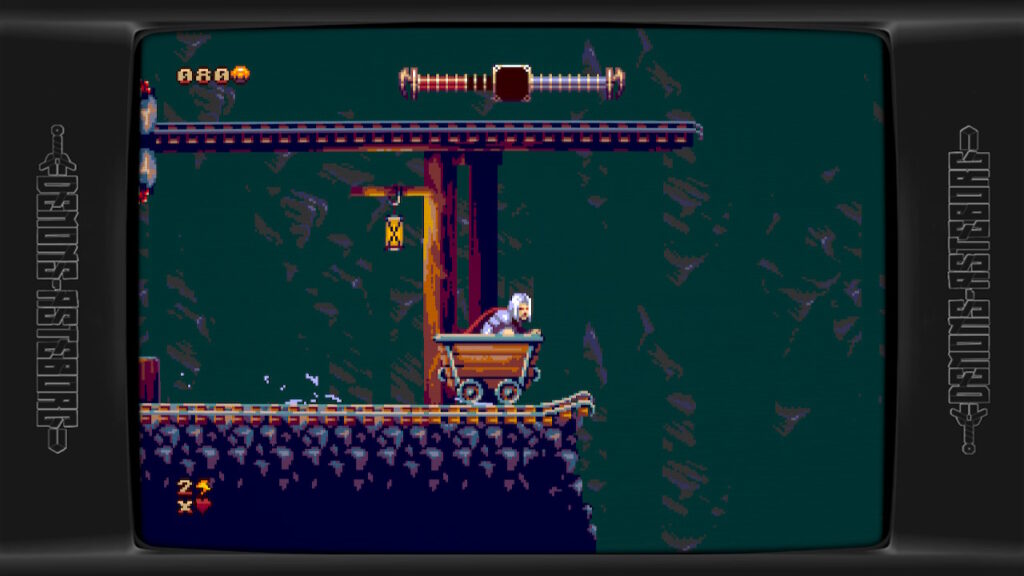
Though there were some issues performance-wise, the environmental decisions did not disappoint. The chip-tune soundtrack was an excellent addition, and the pixel-art visuals are lovely as well. Bosses were formidable, Gareth looked brave, and all the characters I met along my journey were lovely. Though they were largely beautiful, there were occasionally some enemy sprites that blended in with the background. This did not happen often, but it was annoying when it did happen. Even still, the visual and sound design was done very nicely.
Conclusion
Overall, Demons of Asteborg is a very well put together title. Each level is vivid but still feels unique and as though it would fit into the game. The characters, including Gareth, are charming and loveable. The game is very fun. Unfortunately, some minor setbacks with the performance do occur, but they are not substantial enough for me to wholly discount the game. I had a great time with Demons of Asteborg.
Rapid Reviews Rating

4 out of 5
4
You can purchase Demons of Asteborg on the Nintendo eShop here

You can find and read our reviews on OpenCritic.




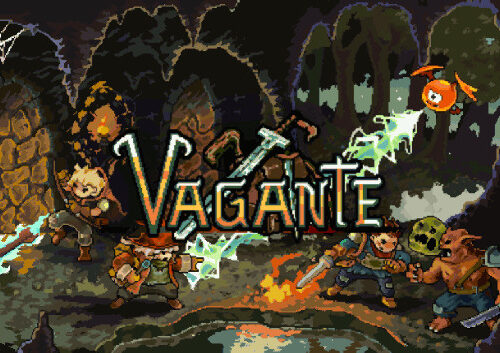
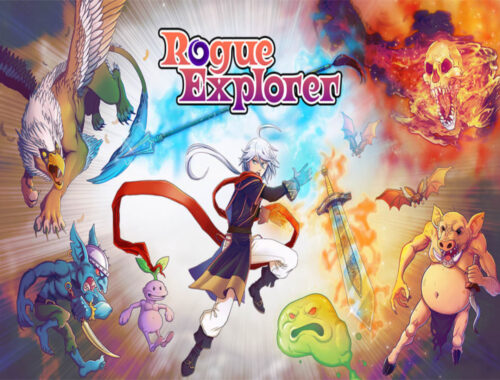
One Comment
Pingback: